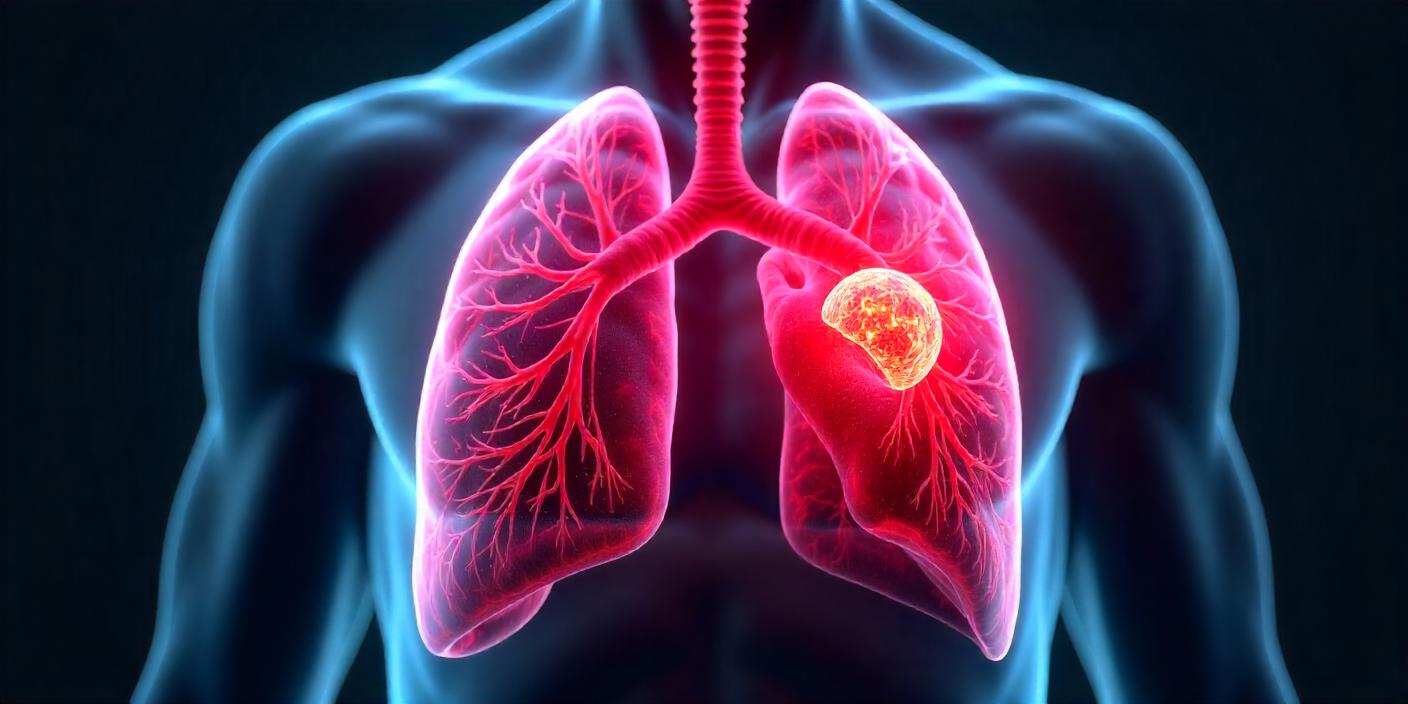
What happens when a person has lung cancer?
Lung cancer is rarely funny, but few conditions are as deadly or transform life as much. For so many, it is a stealth disease that comes with such force that it requires immediate response and wise decisions. I’ve studied medical trends, read through case studies, and written enough to know that behind the stats and search queries lie real people desperate for answers.
If you want to know what it’s like when you’ve got lung cancer, you’re one of millions. Each year, millions browse the internet using that term. This is your complete guide — compact, well-researched, and compassionate.
Understanding of Lung Cancer
Lung cancer starts with lung cells becoming abnormal. Those abnormal cells may grow into tumours and disrupt your breathing system normal function. There are two types:
Non-small cell lung cancer (NSCLC): The most prevalent, accounting for about 85% of all lung cancer cases.
Small cell lung cancer (SCLC): More dangerous but less frequent.
Regardless of the type, the early diagnosis increases the chances of successfully treating lung cancer.
Symptoms of Lung Cancer
Lung cancer is silent during its early stages, and that is why it ends up being so deadly. When and if they do occur, they could be identical to other diseases, such as bronchitis or pneumonia. Some of the most common symptoms of lung cancer include:
Chronic coughing over time
Bleeding sputum
Chest pain upon deep breathing
Shortness of breath
Hoarseness (roughness of sound)
Unusual weight loss
It is simple to blame such indications as being careless, but if they are chronic, then medical evaluation is appropriate.
Causes of Lung Cancer: How It Begins?
There isn’t a single explanation why lung cancer begins. But some identified risk factors increase your risk:
Smoking: The single biggest risk factor. Even exposure to secondhand smoke raises your risk.
Exposure to radon gas
Asbestos and chemicals in the workplace
Family history and genetic factors
Air pollution
Your past exposure does count. The more and longer years that you have had these stimulants in your system, the greater the risk.
Stages of Lung Cancer: From Unobtrusive Beginning to Advanced Disease
Let’s go through each phase, since lung cancer does not develop in all people the same way. Phases help medical doctors decide appropriate lung cancer treatment regimes.
Stage 0 (In Situ)
Cancer is limited to the very surface layer of the lung.
No spread into the surrounding tissues.
Found by accident on a scan for some other purpose.
Stage I
The cancer is localised.
A cough or chest pain might be lung cancer.
Surgery may be successful here as a cure.
Stage II
The tumour is more extensive or has spread to the lymph nodes surrounding it.
Treatment is surgery, chemotherapy, or radiotherapy.
Stage III
The cancer spreads to the chest wall or other lymph nodes.
The patients will experience difficulty breathing, hurting, and extreme tiredness.
It is here that more aggressive treatments of lung cancer enter the picture.
Stage IV (Advanced or Metastatic)
The cancer has spread to distant areas of the body, such as the brain, bones, or liver.
Stage 4 lung cancer prognosis is mixed and generally poor.
The targeted therapy, immunotherapy and palliative care are forms of treatment.
Why is NSCLC different?
Adenocarcinoma, squamous cell carcinoma and large cell carcinoma are the three types of lung cancer that make up non-small cell lung cancer (NSCLC). They share a slightly different behaviour, but the only similarity they share is that they grow slowly in comparison to small cells.
NSCLC patients may be cured with enhanced lung cancer treatment via several early diagnoses. Targeted therapy, as well as immunotherapy, is yielding promising results with this kind of disease.
Lung Cancer Treatment Options:
Pharmacology has gone a long way today in curing lung cancer. Treatment depends on the type of cancer, stage, and general condition of the patient.
Surgery
Best for more advanced stages. Half (lobectomy) or the whole lung can be excised by physicians.
Chemotherapy
Kills growing cancer cells quickly but has undesirable side effects such as weakness, nausea, and hair loss.
Radiation Therapy
Used alone or with other therapy. Kills cancer cells by emitting high-energy beams.
Targeted Therapy
Primarily for non-small cell lung cancer, the medications attack specific mutations in the cancer cells.
Immunotherapy
Arm the body with anti-cancer forces. Best in late cancer when other treatments have not worked.
What Happens Emotionally and Physically
It is all shattering to be diagnosed with lung cancer. The psychological pain is unbelievable and typically preceded by the physical abreast. Patients experience denial, anger, depression, and—in the event of an unsuccessful Course—acceptance.
Physical Changes Are:
Hair loss
Immunosuppression
Weight loss
Shortness of breath
Scar tissue from surgery or radiation
Emotional Disturbance:
Fear of the unknown
Financial limitations
Struggles with loved ones
Tiring clinic appointments
The level of current friend, family, and health support is needed.
Stage 4 Lung Cancer Prognosis:
Stage 4 lung cancer diagnosis is hard to swallow. The survival rates are dismal, somewhere around a 5-year survival of about 5% at best. All cases are different. Medication and targeted therapy advances on the quality of life and survival continue to improve
Lifestyle considerations for a Lung cancer survivor
Lung capacity, despite treatment, patients can adjust their lifestyle to :
Quit Smoking
Eat healthy, fresh, nutritious foods
Keep moving as much as you can.
Employ relaxation and meditation.
Avoid irritants and toxins.
But this won’t treat lung cancer, but it can make you feel 100% better.
Living with Lung Cancer
Life is not finished when one is diagnosed with lung cancer—it’s changed. There are a few disease-free individuals and a few chronically sick. Surveillance, imaging, and psychosocial treatment are all standard.
Patients say that having lung cancer puts things into perspective. The little things matter more, and family and friends matter more.
Conclusion
Lung cancer is not a death sentence–but it is an open invitation to do something about it. Understanding the symptoms, familiarity with your lung cancer treatment options, and acting on them can mean the difference between life and death. If you are a patient, caregiver, or simply an interested reader, remember this: every breath counts. Keep reading, keep fighting, and above all, move forward.
FAQs
1. What are the symptoms of lung cancer in the early stages?
This involves a sudden cough, chest pain, and difficulty breathing
2. Does lung cancer happen in non-smokers?
Yes. Mainly due to smoking, you can get lung cancer not only from relatives or the environment.
3. How does small cell lung cancer differ from non-small cell lung cancer?
NSCLC (non-small cell lung cancer) is a more indolent tumour and much easier to treat than small-cell.
4. What is the 4-stage lung cancer prognosis for the patient?
Patients with worse survival, yet are better able to control symptoms for longer, thanks to modern treatments.
5. Do healthier lungs have alternative treatments to traditional methods?
Yes, such as yoga, herbal supplements, and diet change, which can augment medical therapy and allow for whole lung function.
